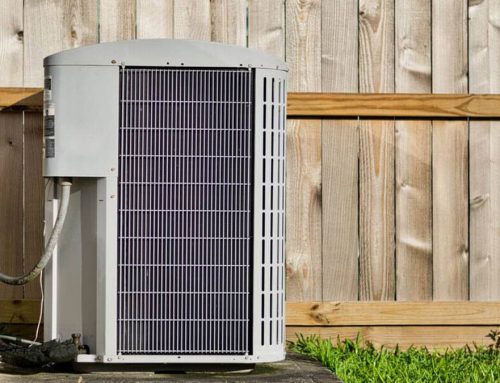
The Change From 13 to 14 SEER Heat Pumps and Air Conditioners Explained
In 2009, the United States adopted the International Energy Conservation Code, or IECC. The purpose of this legislation was to set forth a long term system of energy efficiency upgrades within certain geographic areas of the United States. The IECC agreement essentially lays out a framework of upgrades that continue until 2030, and they require manufacturers and installers to use progressively more and more efficient units.
These changes are good for both the consumers and the environment. Less energy from sources such as electricity and natural gas are used, and therefore these changes drive down monthly costs and environmental damage. Saving energy helps everyone, and nobody likes power outages due to over consumption.
Federal law and manufacturers determine efficiency with a rating called the SEER, or Seasonal Energy Efficiency Ratio. The SEER ratio is calculated by dividing the total cooling output used during cooling season by the total electrical energy used during that same season. When less energy is required to run a unit, it will have a higher SEER ratio.
The IECC agreement splits energy requirements into three different geographical regions. These three regions comprise the Northern, Southeast, and Southwest states. These new changes, which go into effect in 2015, mark the first time that federal energy efficiency requirements will be split into geographic regions. From 2006 to 2014, all states have been required to install only 13 SEER units or better.
Splitting the SEER specifications makes sense. People in the Northern states will likely use less air conditioning than people in the Southern states will. Therefore, the decision to allow 13 SEER units to continue to be installed in the Northern United States makes sense. Likewise, it makes sense to require the installation of 14 SEER air conditioning units in the Southern states, since they are used far more often.
The Move From 13 to 14 SEER in Alabama – The Specifics
If your heat pump or air conditioning unit is rated less than 14 SEER, there is no reason to worry. All current units have been grandfathered in. This change only applies to newly installed units, and is not a mandatory upgrade.
Basically, all newly installed heat pumps and air conditioning units will be required to have a 14 SEER rating after January 1, 2015. There is also a grace period of 18 months which allows 13 SEER air conditioning units to still be installed in Southeastern states (Alabama included), but those units must have been manufactured prior to January 1, 2015. This grace period ends on July 1, 2016.
This isn’t the first time that the federal government has changed the standards for newly installed heat pumps and air conditioners. In 2006, the federal government changed the national standard from 10 SEER to 13 SEER. Again, though, this is the first time that standards will be split into regional areas.
Manufacturing companies are already beginning to phase out some production of 13 SEER units, but there is still demand for these units in the Northern United States. This has naturally led some to speculate as to how rampant the illegal importation of 13 SEER units into the Southern states might be.
How Will This Change Matter?
Before we get started with the particulars, you may want to know what your current unit’s SEER ratio is. Your unit’s SEER number is usually written on a yellow sticker on the outside of the unit. If it cannot be found, you can always look the unit’s model number up on the internet in order to find the SEER number. This will help you determine savings. This number is the SEER rating when it was new. AC units loose efficiency as the age at different amounts depending on the maintenance history.
The most obvious aspect of the change from 13 to 14 SEER is in unit price. 14 SEER units can cost hundreds to thousands of dollar more than their 13 SEER counterparts, but this depends on how big of a unit is required. The good news is that 14 SEER units require less energy to operate, so they will save the homeowner money.
A new 14 SEER unit will save money in monthly operational costs, but the amount of money saved depends on several factors. Most importantly in this equation are how often the unit is used, and the unit that the 14 SEER one is replacing. The replacement of older units with lower SEER ratings leads to more savings.
Just for arguments sake, let’s say that a homeowner spends $100 per month running their old unit. This will help us make sense of the following information.
Changing a 6 SEER unit over to a 14 SEER unit will use 56 percent less power. This means that it will cost 56 percent less to operate the unit. If $100 was spent per month to operate the old 6 SEER unit, the new 14 SEER unit will cost $44 per month to operate.
Going from 7 SEER to 14 SEER uses 50 percent less power, so the cost per month in this case is reduced from $100 to $50 per month. Going from 8 to 14 SEER uses 42 percent less electricity, and thus the monthly cost goes from $100 to $58. The move from 9 to 14 SEER uses 35 percent less power, and thus the monthly cost goes from $100 to $65. The move from 10 to 14 SEER reduces the monthly cost from $100 to $72, because the new unit uses 28 percent less power.
As can plainly be seen, replacing older units leads to substantially greater savings. Simply divide the old SEER number by the new SEER number in order to see what percentage of power the new unit uses in comparison to the old. Going from a 13 to 14 SEER unit saves about 7.2 percent in power costs.
The mandatory move from 13 to 14 SEER is also great for the environment. The production of energy from natural sources creates harmful greenhouse gases. A 9 or 10 SEER unit, which are both common to many households in 2014, can produce as much as 250,000 pounds of harmful greenhouse gasses during its lifetime. A 14 SEER unit reduces this number by about 100,000 pounds, which makes for a total of 150,000 pounds of greenhouse gasses released during its lifetime. This is a significantly smaller carbon footprint.
If you have an older unit with a rating such as a 9 or 10 SEER, the new 14 SEER unit may be a bit larger. Most of the time, this isn’t a major issue to be concerned with, though. The new unit should commonly be somewhere between 10% to 25% larger. Some worry that it will be massively bigger, and this just isn’t the case.
When you want more info, click here for a great beginner’s guide to Air Conditioning


